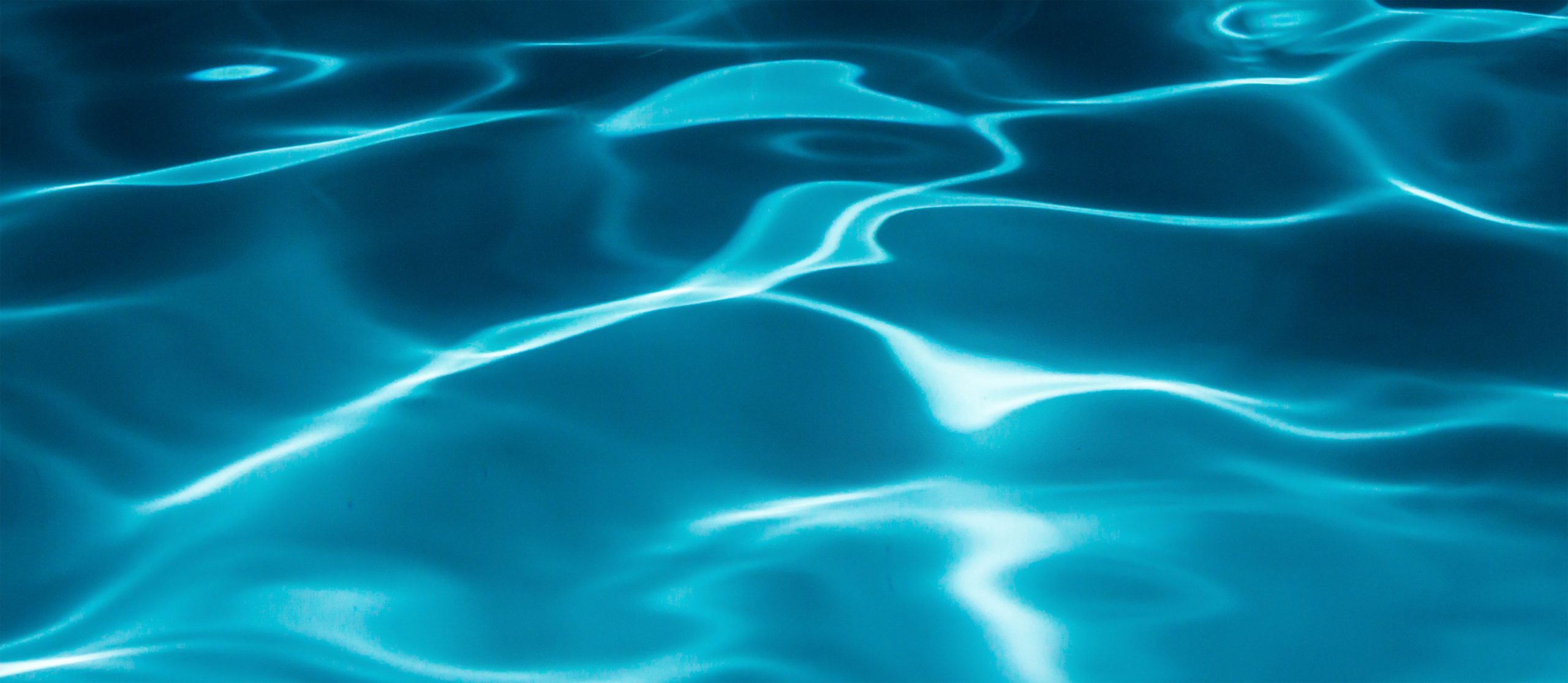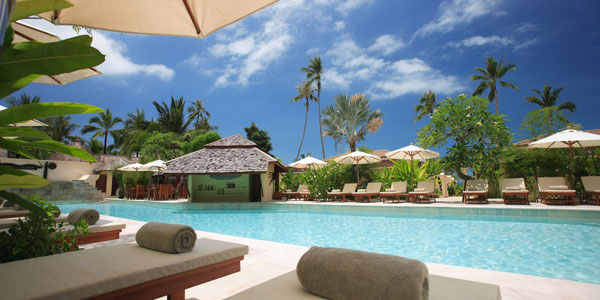How To Balance Pool Chemicals
- September 27, 2019
- Blog, Uncategorized,

There’s a lot that goes into maintaining a beautiful pool, and chemical balancing is one of the most important aspects. Keeping a properly balanced pool ensures clean, clear, safe, and sanitary pool water for swimmers. Beyond sanitation and clarity, unbalanced water is a destructive force that damages pool surfaces, heaters, and pumps. A basic understanding of chemical balance should include testing and management of at least 5 components. These elements are total alkalinity, pH levels, chlorine/sanitation, calcium hardness, and cyanuric acid.
The first step to balancing any pool is to collect and test water samples. Tests can be performed using test strips or a testing kit. If you don’t have a test kit, you can arrange a service call with your local pool professionals to have your water tested. After you have your results from the test, you’ll know what needs to be adjusted. Always carefully follow the manufacturer’s instructions and precautions when dealing with your own backyard pool.
Chlorine/Sanitation
Maintaining proper chlorine levels in your pool keeps the water clean, bacteria-free, and safe for swimming. If the pool is subject to health department oversight, the health code will dictate the ranges that comply. Chlorine’s job is to kill microorganisms and remove contaminants (including bacteria and algae) that may be present in the pool water.
Ideal Range: 1.0-3.0 ppm (This may vary depending on the type of usage and local health requirements)
To Increase: Add a form of chlorine through the appropriate chemical feeder. Chlorine comes in multiple forms including tablets, liquid, and granular forms.
To Decrease: Add a chlorine neutralizer, or partially drain and refill the pool with fresh water.
pH Levels
pH levels indicate the acidity or basic qualities of your pool’s water. They should be checked every time you test the chlorine to ensure your pool water remains safe and clear. Proper pH levels prevent your pool water from becoming cloudy. pH values also have an impact on the effectiveness of the chlorine. Chlorine is more effective at lower pH, and becomes less effective as pH rises. If applicable, the local health department dictates the allowable range for pH. The comfort of swimmers is reduced at the lower end of the ideal range. Therefore, while the chlorine may be most effective, swimmers may complain of stinging eyes and irritated noses at a 7.2 reading.
Ideal Range: 7.2-7.8 (on a pH scale from 0-14)
To Increase: Add soda ash (sodium carbonate)
To Decrease: Add a muriatic acid
Total Alkalinity
Total alkalinity is a level of chemical balance beyond sanitation. However, it’s still important because it supports stable pool conditions. This is because it is a stabilizer for pH levels (another element that needs to be balanced). When total alkalinity is at the proper level, pH levels fluctuate less. Total alkalinity refers to the amount of alkaline material in your pool water.
Ideal Range: 80-120ppm (parts per million)
To Increase: Use sodium bicarbonate (baking soda)
To Decrease: Use sodium bisulfate
Calcium Hardness
Calcium hardness is another component of water balance that promotes sparkling water. If calcium hardness is too high, the water can appear cloudy and leave scaly deposits on the pool surfaces and equipment. Scaling can damage equipment and create a rough condition on the pool shell. On the other hand, if calcium hardness is too low, the pool water becomes corrosive eating away at pool paint or plaster finishes. Calcium poor water damages pool heating elements and corrodes any metal fixtures exposed to the unbalanced water.
Ideal Range:200-400 ppm
To Increase: Use calcium chloride
To Decrease: Partially drain your pool and refill it with fresh water, or use a flocculant to collect and vacuum excess calcium
Cyanuric Acid
Cyanuric acid is a chemical that helps protect chlorine from being destroyed by the sun’s violet rays. Essentially, it’s a sunblock for chlorine! Maintaining a proper amount of cyanuric acid helps retain chlorine levels for a longer period of time.
Ideal Range: 30-50 ppm
To Increase: Add a cyanuric acid water stabilizer to your pool water
To Decrease: Partially drain your pool and refill it with fresh water
Because the chemistry behind pool testing is so specific, it’s best to let a pool professional handle the job. A crystal clear pool needs to be maintained and balanced to remain beautiful, safe, and in compliance with your local health authority. If you are in need of professionals to check and balance your pool, our pool maintenance team has got you covered! Contact us today for help with any swimming pool chemistry challenges you may have this season!


